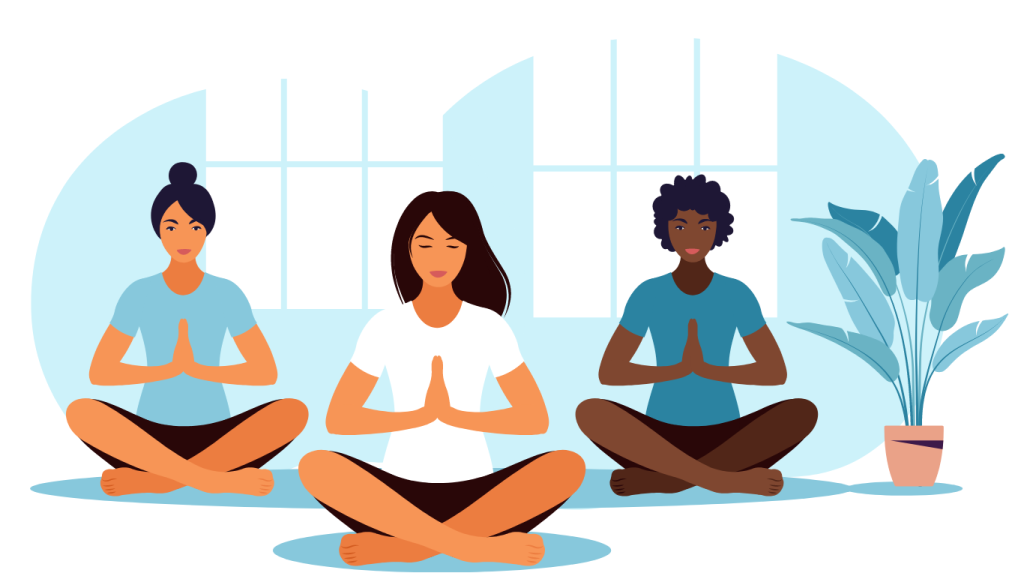Are you looking to transform your life and become a more mindful, centered version of yourself? Do you want to take control of your thoughts and emotions and learn how to better handle stress? If so, then this blog post is for you! We’ll show you some proven strategies for mindfulness and meditation that can help elevate your life.
What is Mindfulness?
Mindfulness is a practice of becoming more aware of your thoughts, feelings, and surroundings. It emphasizes living in the present moment and paying attention to your thoughts and feelings without judgement. By practicing mindfulness, you can become more aware of your environment and the feelings and sensations that come with it. This can help you to make better decisions, be more productive, and simply feel better.

Benefits of Mindfulness
Mindfulness can have numerous benefits for your life. It can help you to stay present in the moment, reducing stress and anxiety. It can also help to improve your physical health, reducing the risk of heart attack and stroke, while also improving your mental health, helping to reduce depression and improve your overall mood. Mindfulness can also help to increase your concentration, focus and creativity, as well as enabling you to be more productive. Furthermore, mindfulness can help to improve your relationships, both personal and professional, by helping you to be more present and aware in those interactions. All of these benefits can help to elevate your life and lead to a more fulfilling existence.
Getting Started with Mindfulness
Now that you know what mindfulness is and the benefits it offers, it’s time to get started. Mindfulness is more than just a practice; it’s a lifestyle. It’s important to begin by setting an intention to practice mindfulness. Take a few minutes to really think about what it means to be mindful and what you hope to accomplish by being more mindful. It can be helpful to write down your intention so you can refer back to it throughout your mindfulness journey.
Once you have a clear intention, it’s time to start your mindfulness practice. The best way to start is to set aside a few minutes each day to practice mindfulness. You can choose any time of day that works best for you, although morning or evening tend to be the most popular. During your practice time, take a few moments to sit quietly, close your eyes, and focus on your breath. Don’t worry if your mind starts to wander – just gently bring your attention back to your breath.
The key to mindfulness is to be gentle and non-judgmental with yourself. Don’t worry about “doing it right” – just focus on being present in the moment. As you continue your practice, you’ll find that it becomes easier to maintain focus and be more mindful in your day-to-day life.
One of the best ways to get started with mindfulness is to use a mindfulness meditation app. There are many apps available, such as 10-Minute Mindfulness: 71 Habits for Living in the Present Moment, which offer guided meditations, helpful tips, and even reminders to help you stay on track with your practice.
Mindfulness Exercises to Try
Mindfulness is a practice that helps us to become more aware of the present moment and to pay attention to our thoughts, feelings, and sensations without judgment. Incorporating mindfulness exercises into your daily life can help to reduce stress, increase focus, and improve overall well-being. In this section, we’ll discuss some of the mindfulness exercises to try that can help you live in the present moment and elevate your life.
One mindfulness exercise to try is the 10-minute mindfulness habit. This habit involves taking 10 minutes each day to focus on the present moment. During this time, focus on your breath, be aware of your body, and observe your thoughts and feelings without judgment. You may also find it helpful to practice mindful meditation, which involves focusing your attention on a single point of focus and allowing yourself to become aware of any thoughts or feelings that come up.
Another mindfulness exercise to try is the “body scan” exercise. This exercise involves systematically scanning the body from head to toe and noticing any sensations, such as tightness or tension. Being mindful of our body can help us to become aware of any areas of tension, which can then be released through relaxation techniques.
Finally, another mindfulness exercise to try is the “five senses” exercise. This exercise involves taking 10 minutes each day to focus on the five senses—sight, sound, touch, taste, and smell. Becoming mindful of our senses can help us to become more aware of our surroundings and can help us to become more present in the moment.
By incorporating these mindfulness exercises into your daily life, you can help to reduce stress, increase focus, and improve overall well-being.
How to Incorporate Mindfulness into Your Daily Life
Now that you are familiar with the basics of mindfulness and its various benefits, it’s time to start incorporating it into your everyday life. The easiest way to do this is to start small. Begin by setting aside a few moments each day to devote to mindfulness. This could be as simple as taking a few deep breaths and focusing on your breathing, or it could be a more involved practice such as a 10-minute mindfulness exercise.
When you first start incorporating mindfulness into your day, it can be helpful to set reminders to take a few moments for yourself. This could be a notification on your phone or a post-it note on your desk. Making mindfulness practices a part of your daily routine can help you stay consistent and reap the rewards of a regular mindfulness practice.
You can also try incorporating mindful activities into your daily tasks. This could mean taking a few extra moments to connect with your breath while taking a shower, or noticing how the different fabrics feel when you are getting dressed. You can even practice mindfulness while eating by savoring each bite and paying attention to the flavors and textures of the food.
By taking a few extra moments throughout your day to focus on being present, you can easily elevate your life with the practice of mindfulness.
What is Meditation?
After learning about the benefits of mindfulness, let’s take a look at another powerful practice: meditation. Meditation is an ancient practice that has been used for centuries as a way to quiet the mind and cultivate inner peace. It is often considered a form of mindfulness, but there are subtle differences between the two. While mindfulness is about being aware of the present moment and accepting whatever is happening, meditation involves focusing on something specific, such as the breath, and allowing thoughts and feelings to come and go without judgment. Practicing meditation can help you develop a greater sense of self-awareness and peace with whatever arises in the present moment.
Benefits of Meditation
Meditation has been proven to provide numerous physical, mental, and emotional benefits. It has been linked to improved physiological well-being, increased levels of happiness, and reduced stress. Meditation can also be used to help you connect with your inner self, enabling you to gain greater clarity and insight into the life you want to lead. Additionally, regular meditation can help you become more mindful and aware of the present moment. This can help you become more focused and better equipped to handle any challenges or obstacles you may face each day.
Getting Started with Meditation
Meditation is an ancient practice that has been used for centuries to cultivate inner peace and mindfulness. It is a powerful tool that can help you to become more aware of your thoughts, feelings, and sensations in the present moment. To get started with meditation, you will need to find a quiet space and take a few moments to relax and clear your mind. You can start by focusing on your breath and simply noticing the sensations in your body as you inhale and exhale. As you become more comfortable with the practice, you can start t


